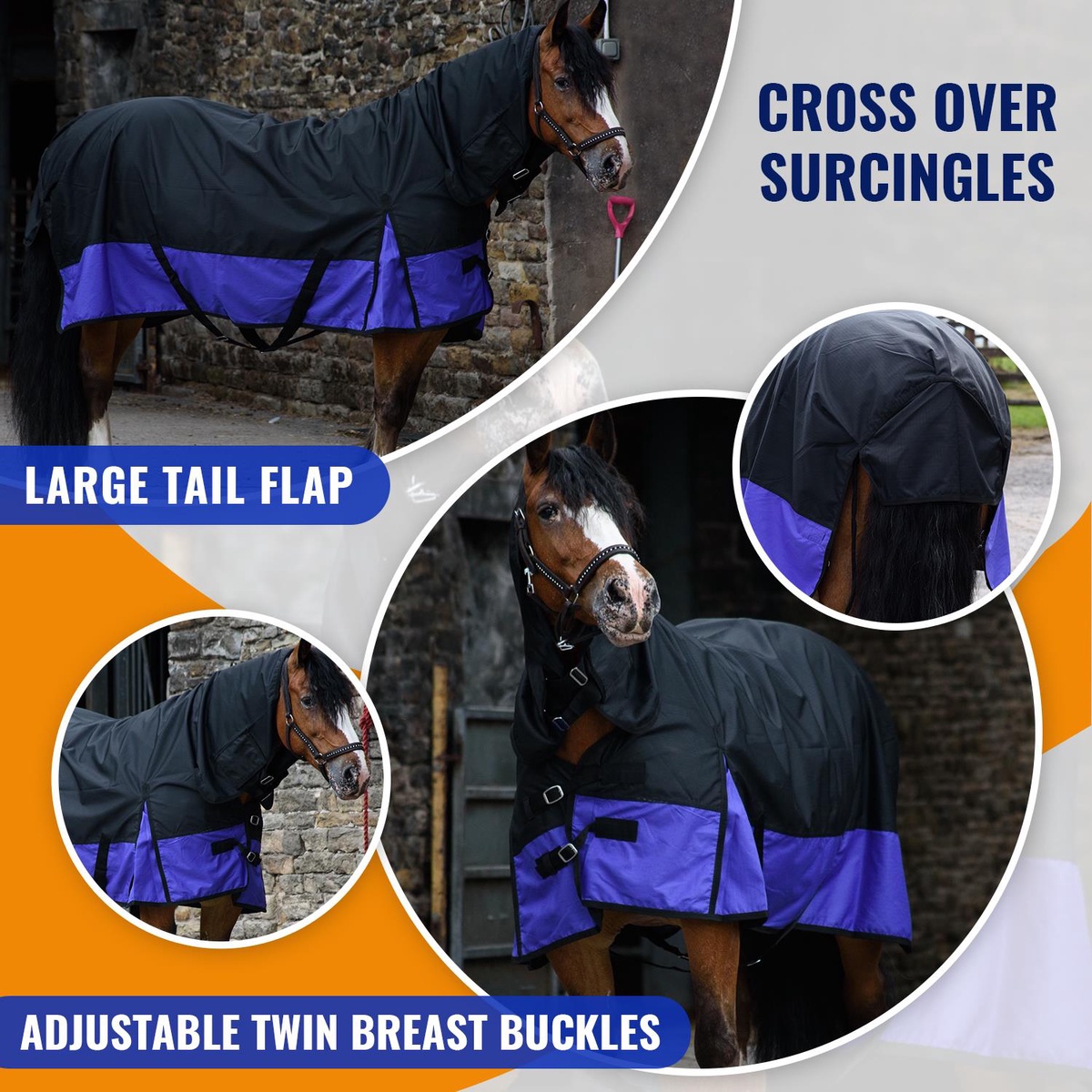As the days grow shorter and the wind whispers of frosty mornings, the question of winter horse rugs inevitably pops into every horse owner's mind. Choosing the right rug for your furry friend can feel like navigating a labyrinth of deniers, fill weights and neck cover options. Worry not, fellow equestrians, for this blog is your compass! We'll delve into the different types of lightweight horse rug, explore your budget-friendly options, and equip you with the knowledge to confidently select the perfect winter wardrobe for your equine companion.
Understanding the Rug Landscape
Before we dive into specific rugs, let's establish a basic understanding of the different categories. Horse rugs can be broadly categorized as:
- Turnout Rugs: Designed for outdoor use, these rugs protect your horse from the elements while they graze and frolic in their paddocks. They come in varying weights and waterproof levels to suit different weather conditions.
- Stable Rugs: Primarily used indoors, these rugs offer warmth and comfort in a stable environment. They're typically lighter than turnout rugs and may have breathable fabrics for better air circulation.
- Fly Rugs: These lightweight rugs protect from pesky insects during warmer months. They often have mesh panels for ventilation and come with belly flaps and tail flaps for added defence.
Navigating the Denier Wilderness
Denier, a measure of fabric thickness, is a crucial factor in choosing a rug. Higher denier rugs are more durable and resistant to tears, ideal for playful youngsters or adventurous explorers. However, they can be less breathable in warmer weather. For temperate climates, a mid-range denier rug (around 600-1200) might be a good balance between protection and comfort.
Fill Power: Finding the Sweet Spot
The fill weight, measured in grams, determines the level of insulation a rug provides. A 0g fill is a waterproof sheet suitable for mild weather or rain protection. Lightweight rugs (50-150g) offer essential warmth for crisp mornings, while mediumweight rugs (150-250g) are ideal for colder days. Heavyweight rugs (250g+) provide maximum insulation for frigid conditions. Remember, a clipped horse will need a heavier rug than an unclipped one.
Budget-Conscious Rugging
Let's face it: horse care can be expensive. But fret not; budget-friendly options abound! Consider:
Second-hand rugs: Pre-loved rugs can be a fantastic way to save, especially for lightweight options. Just ensure they're in good condition and fit your horse correctly.
Off-brand rugs: While some popular brands command premium prices, many lesser-known brands offer excellent quality and value. Do your research and compare features before committing.
DIY rugs: For crafty equestrians, sewing your rugs can be a rewarding and cost-effective option. Choose breathable fabrics and waterproof linings for optimal results.
Rugging Recommendations for Different Seasons
Spring and Fall: The lightweight turnout rug with neck covers is perfect for unpredictable weather. Fleece rugs offer warmth during chilly mornings and evenings.
Summer: Fly rugs are your best friend! Choose breathable mesh fabrics and consider belly and tail flaps for extra protection.
Winter: For unclipped horses, a mediumweight turnout rug with a neck cover may suffice. For clipped horses, a heavyweight rug with a liner or under-blanket is ideal. During extreme cold, consider additional layers like hoods and leg wraps.
Remember
Always prioritize fit: A well-fitting rug is crucial for comfort and preventing rubs. Measure your horse carefully and consult sizing charts before purchasing.
Layer up: For extra warmth and adjustability, consider layering rugs or using liners.
Rugging isn't one-size-fits-all: Monitor your horse's individual needs and adjust their rug accordingly. Some horses may require more or less insulation than others.
Regular checks: Regularly check your horse for any signs of discomfort or overheating under the rug.
With this knowledge and these handy tips, you're well on your way to choosing the perfect winter wardrobe for your beloved horse. So, embrace the crisp air, the frosted mornings, and the joy of seeing your horse warm and comfortable in their wintery haven. Happy riding!


No comments yet